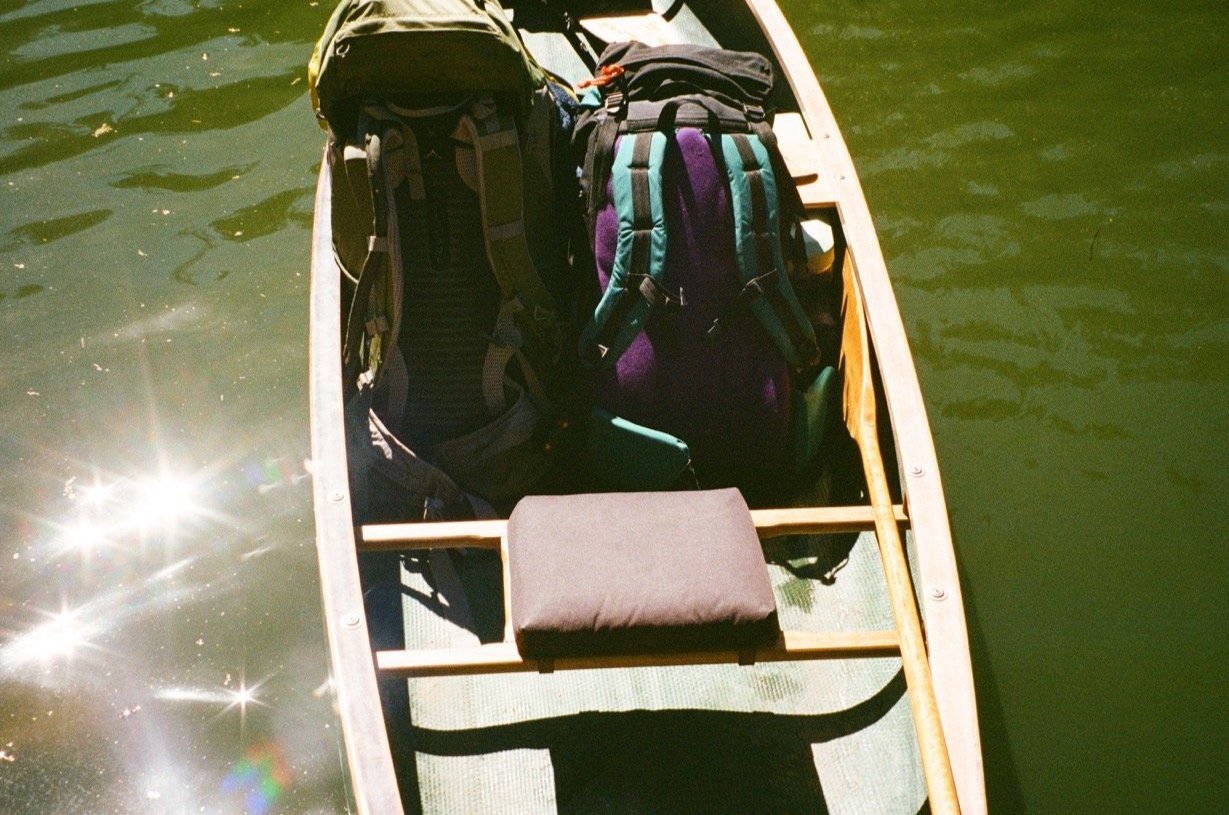A Sustainable Process for Fixing Outdoor Gear
There’s no doubt that old gear has more character. And for us, that character is inspiring. It has more of a story and less of an impact on our planet. The more gear we can repair and repurpose, the less amount that goes to a landfill. We can admit that new gear is fun and necessary for certain things you may need for an outing. But there are also certain things that can be repaired, bought second hand, or that could even be made at home. It will always be easier to just buy new, but re-using is cooler! And you can save yourself some money doing so.
This is the revival of an old canoe. We didn’t do a whole lot to it, but otherwise it would be sitting in someone’s backyard getting baked. The process of fixing things like a canoe or a backpack in a sustainable way is as simple as it gets. Using materials to make your repairs that would otherwise go to waste. Scheming a plan to fix a canoe seat is just one of many circumstances where a sustainable process can be utilized.
The two seats needed something. We took the canoe on its maiden voyage for a short backpacking trip and the deteriorating seats made it an uncomfortable journey. Instead of spending a hundred dollars on some boring seat replacements, we went to Goodwill and got a grill cover for sevens bucks, then found a few other things laying around the office to make them; repurposing and reusing as much as possible. The wooden frame of the existing seat had potential. We added glue to where the wood frame joins and tapped it tight with a hammer. This made them solid again, now for the cushion.
When this canoe was made in 1981, the seats were a mesh cane material within the wood frame. We wanted a cushion that was thicker and could take more of a beating. The grill cover was used as the outer shell of the cushion. Two inch thick cotton insulation was used as the padding. This material was saved from an insulated shipping box. The base of the seat was a thin wood board similar to OSB that the outer shell could be wrapped around and stapled to. This thin wood board was salvaged in the past, probably off someone’s curb. Nylon strap from a backpack and an old leather belt made the straps to hold the cushion snug to the wood frame.
This is a sustainable process for fixing outdoor gear, or really to fix anything. The process of sourcing salvaged and second hand materials, and also the process of making your own gear or repairing what you already have. These both help reduce waste and your carbon footprint. You don’t need to stop buying new things. You don’t need to rip everything apart in your house for materials or hoard things you find on the side of the road. This is just a small way to be sustainable and resourceful. And its fun!
Photography by Zach Duncan and Jared Nelson





